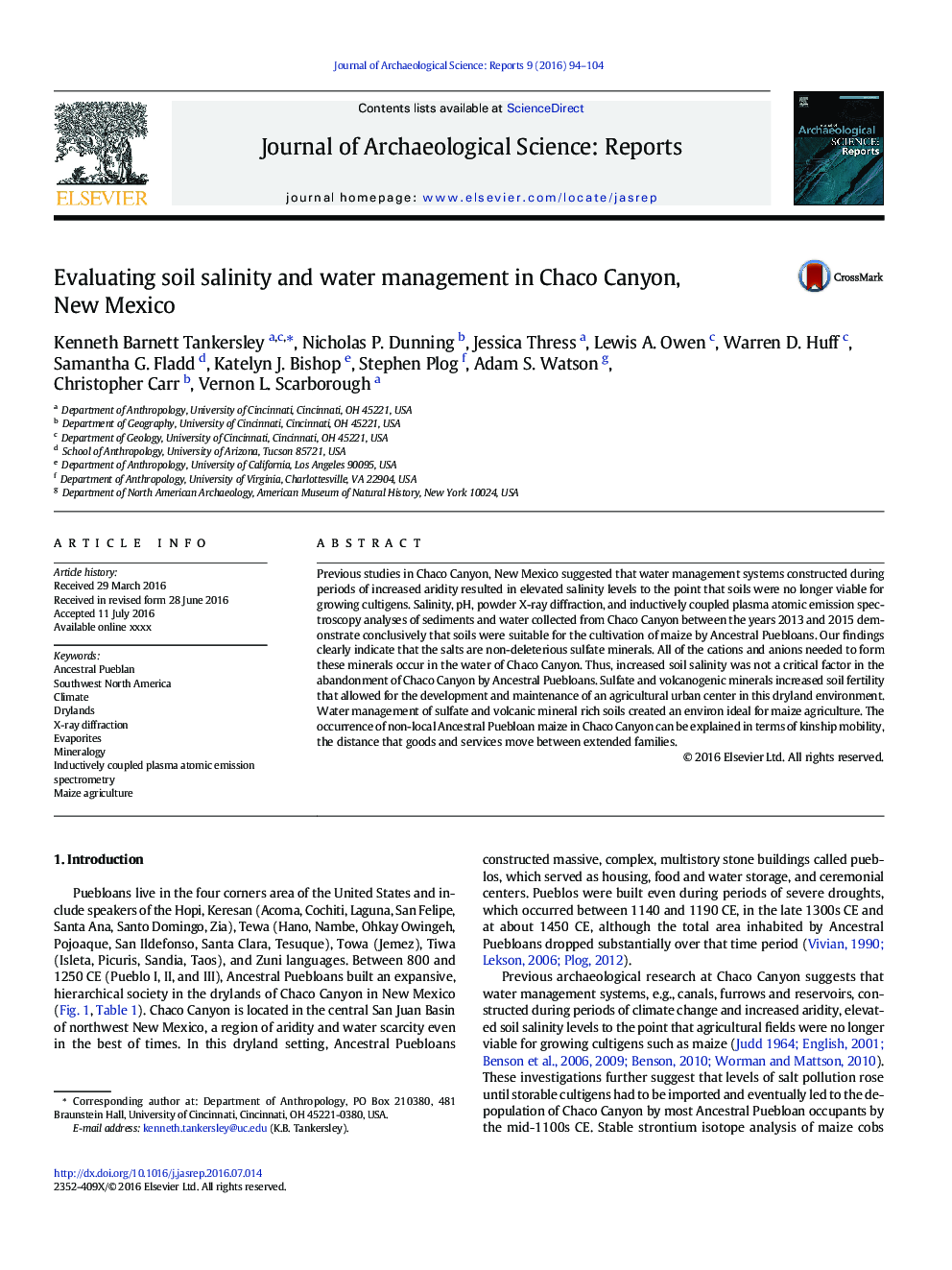| Article ID | Journal | Published Year | Pages | File Type |
|---|---|---|---|---|
| 7445289 | Journal of Archaeological Science: Reports | 2016 | 11 Pages |
Abstract
Previous studies in Chaco Canyon, New Mexico suggested that water management systems constructed during periods of increased aridity resulted in elevated salinity levels to the point that soils were no longer viable for growing cultigens. Salinity, pH, powder X-ray diffraction, and inductively coupled plasma atomic emission spectroscopy analyses of sediments and water collected from Chaco Canyon between the years 2013 and 2015 demonstrate conclusively that soils were suitable for the cultivation of maize by Ancestral Puebloans. Our findings clearly indicate that the salts are non-deleterious sulfate minerals. All of the cations and anions needed to form these minerals occur in the water of Chaco Canyon. Thus, increased soil salinity was not a critical factor in the abandonment of Chaco Canyon by Ancestral Puebloans. Sulfate and volcanogenic minerals increased soil fertility that allowed for the development and maintenance of an agricultural urban center in this dryland environment. Water management of sulfate and volcanic mineral rich soils created an environ ideal for maize agriculture. The occurrence of non-local Ancestral Puebloan maize in Chaco Canyon can be explained in terms of kinship mobility, the distance that goods and services move between extended families.
Keywords
Related Topics
Social Sciences and Humanities
Arts and Humanities
History
Authors
Kenneth Barnett Tankersley, Nicholas P. Dunning, Jessica Thress, Lewis A. Owen, Warren D. Huff, Samantha G. Fladd, Katelyn J. Bishop, Stephen Plog, Adam S. Watson, Christopher Carr, Vernon L. Scarborough,
